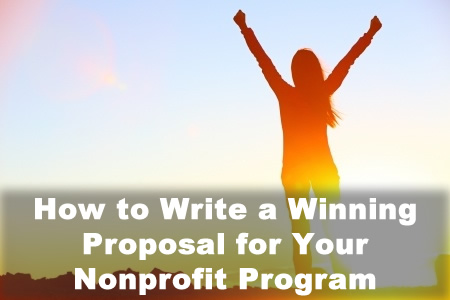Every nonprofit project benefits from a winning proposal, whether your organization is seeking grant funding, individual donations, or just a clear, strategic picture of what you are doing and why. This part of fundraising and project planning is often the most difficult for nonprofits, though it doesn’t have to be.
Any project or program can be broken down to these basic elements to make a compelling case for your work, or show you exactly where you have gaps in your project design before you fundraise!
Craft a problem statement
The most important part of a proposal is a problem statement, or the specific need for your work in the community. This section needs to show that there is a significant, pressing, external need in your for your work. Good problem statements use both statistics and other “hard” data in combination with “soft” data, such as community members’ opinions and testimonials. The best ones have three clear elements:
- The situation that concerns your organization. For example, a regional animal shelter may be concerned with exponential growth of stray kittens in an urban area, estimated at more than 500 strays in a 10 block neighborhood.
- The significance, or external impact, of that situation. The stray kittens 1) lack humane shelter; 2) are contributing to a rise in tick-borne disease and a rabies epidemic; and 3) are damaging local ecosystems for natural wildlife.
- An explanation of why the problem exists. A rise in unemployment led to animal abandonment and a decline in spaying and neutering, along with the closing of a local animal clinic that offered free or discounted resources for the economically disadvantaged.
Define SMART outcomes
The next step is to link what the nonprofit hopes to accomplish – its impacts, outcomes, or goals – to the problem itself. They should always be SMART, or specific, measurable, achievable, realistic, and time-oriented. A good idea is to keep your project to only a few meaningful outcomes that relate specifically to your project and the problem itself. In the case of the animal shelter:
- Register at least 80% of domestic cats to households in the 10-block neighborhood within 6 months of program inception, as measured by a community survey.
- Spay or neuter and vaccinate 100% of cats linked to households within a year of program inception.
- Remove all cats unclaimed by households to the shelter within 6 months of program inception.
- Reduce the rate of feral cats by 90% over 5 years, as measured by annual community surveys and support programs.
Link methods between the problem and your outcomes
The crux of your proposal is your methods section, or the “how” of your work. This is also a work plan and timeline to demonstrate that your particular program will solve the problem, or lead to the outcomes you describe, using real statistics and best practices in your line of work. For example, the animal shelter would accomplish its outcomes by its chosen methods of:
- Establishing a 3-person volunteer mobile team from the neighborhood itself to go door-to-door twice weekly during after work hours and identify and register (in central database) all cats in the community, matching them to owners or collecting them for shelter-based adoption.
- Offering a bi-weekly spaying, neutering, and vaccination program that keeps computer-based registration of all cats.
- Advertising adoption pick up services and free clinics via social media, posters in neighborhood hotspots, and networking with schools, churches, restaurants, and other community outlets.
For the methods section to be effective, you need to not just explain the plan for action, but also why they are the most effective means of addressing the problem and also why your organization is best poised to deliver it. In this case, maybe door-to-door is necessary because people have limited transportation from unemployment and poverty.
Also, since the closure of the only free animal services clinic in the area, people may not have an affordable and reasonable option for animal care. The shelter is probably the only place in the County with capacity to house the abandoned cats that will be collected as well.
Put all of the proposal elements together in a compelling case
There is room for creativity in your proposal, but the general winning format is to focus on linking a clear need, solution, and impact for your work and framing it in the following order:
- A summary – this is a brief description of the entire proposal (less than a page) that links to why the particular funder is the right fit for your work as well.
- The problem statement.
- The outcomes and impact statement.
- The methods or work plan with an actionable timeline and demonstration or organizational capacity.
- Evaluation metrics that will be used.
- A sustainability plan and budget – you need to not just show your costs and revenue, but how the program will sustain itself going forward.
- A summary and background of your organization and its mission and goals.
This formula will produce winning proposals for any project! Other great resources are The Grantsmanship Center and The Foundation Center.

